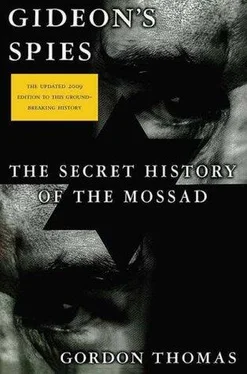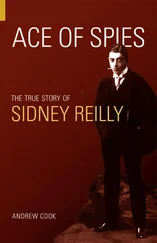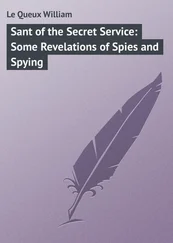Gordon Thomas - Gideon's Spies
Здесь есть возможность читать онлайн «Gordon Thomas - Gideon's Spies» весь текст электронной книги совершенно бесплатно (целиком полную версию без сокращений). В некоторых случаях можно слушать аудио, скачать через торрент в формате fb2 и присутствует краткое содержание. Город: New York, Год выпуска: 2009, ISBN: 2009, Издательство: Thomas Dunne Books, Жанр: История, на английском языке. Описание произведения, (предисловие) а так же отзывы посетителей доступны на портале библиотеки ЛибКат.
- Название:Gideon's Spies
- Автор:
- Издательство:Thomas Dunne Books
- Жанр:
- Год:2009
- Город:New York
- ISBN:978-0-312-53901-6
- Рейтинг книги:4 / 5. Голосов: 1
-
Избранное:Добавить в избранное
- Отзывы:
-
Ваша оценка:
- 80
- 1
- 2
- 3
- 4
- 5
Gideon's Spies: краткое содержание, описание и аннотация
Предлагаем к чтению аннотацию, описание, краткое содержание или предисловие (зависит от того, что написал сам автор книги «Gideon's Spies»). Если вы не нашли необходимую информацию о книге — напишите в комментариях, мы постараемся отыскать её.
Gideon’s Spies
Gideon's Spies — читать онлайн бесплатно полную книгу (весь текст) целиком
Ниже представлен текст книги, разбитый по страницам. Система сохранения места последней прочитанной страницы, позволяет с удобством читать онлайн бесплатно книгу «Gideon's Spies», без необходимости каждый раз заново искать на чём Вы остановились. Поставьте закладку, и сможете в любой момент перейти на страницу, на которой закончили чтение.
Интервал:
Закладка:
At the time Khan was making his confession on television, the Special Forces near the northern provinces of Pakistan had once more picked up bin Laden’s trail. The sightings were sent to the Joint Special Operations Command at Fort Bragg, North Carolina, on to the CIA, and finally to the Pentagon and State Department. Everyone recognized that this was a sensitive time. Only a week before, at the World Economic Forum in Davos, Switzerland, Musharraf had said he would not allow American troops to search for bin Laden inside Pakistan. Washington had gritted its teeth and said nothing.
Mossad’s station in the capital had pieced together the understanding of what had transpired behind the scenes. Washington would not pressurize Musharraf to bring Khan for trial over nuclear arms trafficking. Instead, it would remain focused on Pakistan’s continued support for the war on terrorism. In return the Pakistan army and the ISI would hunt for bin Laden inside the country. U.S. Special Forces would be allowed to participate but only under Pakistani command. It was a recipe for mutual suspicion in the field; and after four weeks, not surprisingly with no trace of bin Laden, the search was abandoned.
Bin Laden had issued several tapes since he had first exulted over the destruction of the Twin Towers and the Pentagon. The Mossad specialists—psychiatrists, psychologists, and behavioural scientists—determined that bin Laden continued to sound like a man who had created his own reality. Their conclusion (seen by the author) was: “At the core of his thinking is death. From his manner and his speech patterns, death is now an integral part of his life. It is not rage that drives him. There is a deeper and all-animating and all-emerging force. His voice is not simply that of the classic street demagogue. It displays what can be called ‘the evil of the truly evil.’ Hitler and Stalin possessed the same vocal traits. He is driven by masked violence. This allows him to operate in a completely detached manner against all those he does not accept have a right to live.”
The arrival of his latest video in November 2004 had caused a frisson of excitement among the Mossad analysts. It had been made in a television studio with good quality sound and lighting. He had been filmed against a silk drape; its yellow color was known to be that of his favourite Afghan flower. But it was bin Laden himself who intrigued the analysts. His robes were no longer those of the mountain man but those worn by wealthy city dwellers. His stick and the Kalashnikov rifle slung over his shoulder—props he had always displayed on previous videos—had gone. His beard was neatly trimmed, his eyes clear, his skin healthy. He no longer looked the sick man of his previous videos. When he spoke, his delivery was calm and measured. In earlier videos his mumbling and hesitations had been marked. The latest video suggested he had received professional voice coaching. When he spoke, it was directly into the camera.
The Mossad analysts wondered if the video had been made either in Pakistan or even possibly in one of the northwest provinces of China, where several million Muslims lived in uneasy communion with the Beijing regime. Untold thousands were al-Qaeda supporters and worked in gangs smuggling humans or narcotics into the West. The analysts concluded that one of those gangs had been entrusted to bring the video to Al-Jazeera. As usual, the station publicly insisted it had no idea how the tape came into its hands.
But on that Spring day in 2005, Jamal had met Horaj, not to receive further confirmation that, despite its angry denials, China was offering shelter to bin Laden, but to discover more about a secret underground route along which defectors from China and North Korea made their perilous way to freedom in the West. Of special interest to Mossad was the North Korean scientist who had been working on genetic weapons.
Since March 1984, when Saddam Hussein’s pilots had dropped 100-liter canisters of biological agents on the Kurdish population in the township of Halanja, killing five thousand in minutes, the threat of a biowarfare attack on Israel had become a priority for Mossad.
Russian-speaking agents had tracked down scientists who had once worked for the secret Department 12 of the KGB’s First Chief Directorate. Their work had been responsible for biological espionage, the planning and preparation of biological terrorism, and all-out biological war. The United States, Britain, and Israel had been among Department 12’s prime targets. Its biologists had successfully genetically weaponized in their Moscow laboratories some of the world’s most dangerous viruses: Ebola, anthrax, smallpox, and baculavius. They had also been working on genes responsible for specific sex, race, and other anthropological features. Another weapon being researched included a toxin that would result in the corruption of human mental processes, induce uncontrollable fear, and lead to death. Substances had also been created to specifically poison reservoirs, food stocks, and pharmaceutical factories; and other Department 12 scientists had been developing sophisticated airborne delivery systems for the Plague, the medieval Black Death, and the equally deadly botulinium. The Mossad agents discovered that when the Soviet Union collapsed, a number of the scientists were recruited to work in North Korea and China.
Links were also found between these countries and genetic weapons research, which had been carried out in the apartheid regime of South Africa; its Project Coast was specifically intended to create an ethnic bomb. The project’s leader, Wouter Basson, was a gifted, totally ruthless, and amoral scientist whose ability to develop biological weapons had made him, in the later words of Archbishop Tutu, “the Devil’s disciple working in the most diabolical aspect of apartheid.” Using front companies that claimed to be conducting bona fide research, Project Coast gathered scientific information from around the world. Some of it came into a small, rented cottage near Ascot in Berkshire, England. Number 1 Faircloth Farm Cottage, Watersplash, was an unlikely address to receive germ warfare material from, among others, the scientists of North Korea. But for them—as isolated as South Africa was from the global scientific community in the days of apartheid—the cottage provided a means of exchanging data, one that escaped the surveillance of MI5. Later, scientists from Project Coast visited Iraq and Libya, and finally Iran.
At first the ayatollahs had refused to keep producing biological weapons as they were contrary to Islamic doctrine, a truth that Mossad’s propagandists skillfully promoted across the Middle East. But after Iraq’s massacre of the Kurds, the Tehran regime reversed the Koran teaching and the Majlis, Iran’s parliament, voted unanimously that biological and chemical weapons should be mass produced. The document the South African scientists had left behind on their visit to Tehran were dusted down by the newly formed Quds Force—in the Arabic language Quds is Jerusalem—which was entrusted in providing Iran with a frontline capability until it had its nuclear arsenal. The South African blueprints ensured the work progressed rapidly.
Among the Project Coast documents was one (seen by the author) that claimed: “The key to creating a successful ethnic bomb lies in isolating the small but critical differences in the human genetic code. That difference consists of no more than 0.1 percent. But this minute amount, which accounts for 3 million letters of the genome code, makes it possible for a comparison between one individual and another. This also makes it possible to identify the differences between large ethnic groups. These differences make them exploitable as a military weapon.” Project Coast’s aim had been to isolate the DNA of certain genes so they could be attacked by deadly microorganisms its scientists were creating in their laboratories. Like Department 12, they also called it an “ethnic bomb,” and it was designed to incapacitate, and even kill, the South African Black population. The work was still in its infancy when the apartheid regime collapsed.
Читать дальшеИнтервал:
Закладка:
Похожие книги на «Gideon's Spies»
Представляем Вашему вниманию похожие книги на «Gideon's Spies» списком для выбора. Мы отобрали схожую по названию и смыслу литературу в надежде предоставить читателям больше вариантов отыскать новые, интересные, ещё непрочитанные произведения.
Обсуждение, отзывы о книге «Gideon's Spies» и просто собственные мнения читателей. Оставьте ваши комментарии, напишите, что Вы думаете о произведении, его смысле или главных героях. Укажите что конкретно понравилось, а что нет, и почему Вы так считаете.












